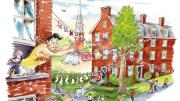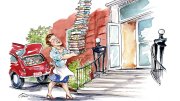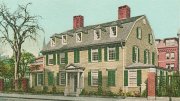1932
Herbert Hoover carries the College (1,211 votes) in the Crimson’s presidential poll. The Alumni Bulletin attributes Norman Thomas’s strong showing (484 to FDR’s 620) to “an extraordinary increase of independent thinking among the students.”
Harvard football candidates are now required to change their socks and underwear at least three times a week. Long hair and moustaches, coincidentally, are becoming passé for members of the team.
1947
President James Bryant Conant criticizes the Soviet Union for its unwillingness to agree to international control of the atomic bomb, which he characterizes as “a sword of Damocles hanging over our industrialized civilization.”
1952
Harvard begins its largest financial aid program, allocating almost $1 million in scholarships, loans, and jobs for more than one third of the undergraduate student body.
1967
Institute of Politics scholars studying the draft system recommend higher pay for draftees and enlistees, abolition of special deferments for students and teachers, and a lottery to determine “who should serve when not all serve.”
1972
The new Harvard Center for Research in Children’s Television, with administrative support from the Children’s Television workshop, will explore the effects of visual media on children.
1987
“Ambitious plans are afoot to wire the University for the information age,” the editors report. The Corporation has been asked to authorize a new network that will introduce, among other things, “state-of-the-art telephone service.”
1997
In accordance with Harvard’s non-discrimination policy, the University’s Board of Ministry recommends that same-sex blessing or commitment ceremonies be permitted in Memorial Church.









